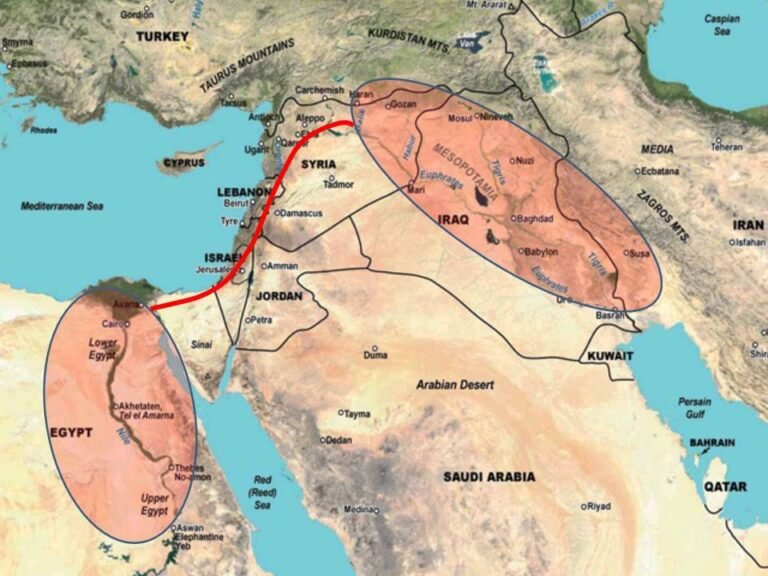The Dating of Ezekiel’s Composition
The Book of Ezekiel, a profound text in the Hebrew Bible, has long intrigued scholars and theologians alike with its vivid imagery and complex themes. But when was Ezekiel written? This question not only sheds light on the historical context of the prophet’s ministry during the Babylonian exile but also enhances our understanding of the enduring messages contained within its chapters. By exploring the timing and circumstances of its composition, we can better appreciate the significance of Ezekiel’s visions and prophecies in the broader narrative of biblical history.
What is the date of composition and authorship of the Book of Ezekiel?
The Book of Ezekiel, penned by Ezekiel ben-Buzi, offers a profound glimpse into the life of a priest navigating the complexities of exile in Babylon. Written during a tumultuous period between 593 and 571 BC, this prophetic work captures Ezekiel’s visions and messages, reflecting the spiritual and social challenges faced by the Jewish people during their captivity. Through vivid imagery and compelling narratives, Ezekiel’s writings resonate with themes of hope, restoration, and divine judgment, making it a cornerstone of biblical literature.
When were the books of Daniel and Ezekiel composed?
The books of Ezekiel and Daniel, though written in the same century, offer distinct perspectives on the challenges faced by the Israelites during the Babylonian exile. Ezekiel, a priest and prophet, penned his messages around the 6th century BC, focusing on the themes of judgment and restoration. His vivid imagery and symbolic actions were designed to inspire hope among a people grappling with their identity and faith in a foreign land.
Similarly, Daniel emerged as a pivotal figure during this tumultuous period, also contributing to the prophetic literature around the 6th century BC. His writings combine narrative and apocalyptic visions, highlighting God’s sovereignty and the ultimate triumph of faith over oppression. Together, these two major prophets provide profound insights into the spiritual resilience of the Israelites, encouraging them to remain steadfast in their beliefs despite the trials of exile.
What is the historical background of the Book of Ezekiel?
Ezekiel’s prophecies emerged during a tumultuous period in Israel’s history, marked by the Babylonian exile that began in 597 B.C. This upheaval saw the young Judean king Jehoiachin taken captive, leaving a power vacuum that the Babylonians exploited by installing his uncle Zedekiah as a puppet ruler in Jerusalem. The political landscape was fraught with uncertainty, as the exiled community grappled with their identity and faith amid foreign domination.
In this context, Ezekiel served as a vital voice for the Israelites, conveying messages of hope and restoration despite their bleak circumstances. His vivid visions and symbolic actions not only addressed the immediate despair of the exiles but also sought to reaffirm their covenant relationship with God. Through his prophecies, Ezekiel emphasized the possibility of renewal and a future return to their homeland, encouraging the people to maintain their faith during a time of profound crisis.
Unraveling the Timeline of Ezekiel’s Texts
The texts attributed to Ezekiel represent a pivotal moment in the history of prophetic literature, offering a unique perspective on the theological and social dynamics of ancient Israel. Written during a time of upheaval, these writings emerged in the 6th century BCE, following the Babylonian exile. Ezekiel’s vivid imagery and symbolic language not only convey profound spiritual messages but also reflect the historical context of a people grappling with loss and identity.
Understanding the timeline of Ezekiel’s texts reveals the layers of his prophetic vision. The initial oracles set the stage for Israel’s impending judgment, emphasizing the consequences of social injustice and idolatry. As the narrative unfolds, Ezekiel’s messages shift towards themes of restoration and hope, particularly in the vision of the valley of dry bones, which symbolizes the renewal of the nation. This transformation in tone mirrors the evolving circumstances of the Jewish exiles as they sought to regain their cultural and religious identity.
The intricate connections within Ezekiel’s writings highlight the interplay between history and prophecy. His texts are not merely historical accounts; they serve as a theological framework that resonates with contemporary audiences. By unraveling the timeline of Ezekiel’s prophetic messages, we gain insight into the enduring relevance of these ancient texts, revealing their profound impact on subsequent religious thought and the ongoing quest for understanding in times of crisis.
A Historical Analysis of Ezekiel’s Authorship
The authorship of the Book of Ezekiel has long intrigued scholars and theologians alike, as it intertwines historical context with prophetic vision. Traditionally attributed to the prophet Ezekiel himself, the text presents a unique blend of personal experience and communal crisis, reflecting the Babylonian exile’s profound impact on Jewish identity. Through a meticulous examination of linguistic style, thematic elements, and the socio-political backdrop of 6th century BCE, researchers have engaged in spirited debates over its composition, leading to varied interpretations of Ezekiel’s role as both a prophet and a theological innovator. This exploration not only deepens our understanding of the text but also illuminates the enduring complexities of faith and identity in times of turmoil.
Contextual Clues in Ezekiel’s Composition
Ezekiel’s prophetic visions are rich with contextual clues that offer profound insights into the socio-political landscape of ancient Israel. As a priest and prophet during the Babylonian exile, Ezekiel’s writings resonate with the struggles and aspirations of a displaced community. His vivid imagery and symbolic actions serve as a narrative framework that not only reflects the turmoil of the times but also provides hope for restoration and renewal. Through this lens, readers can understand how Ezekiel’s messages were shaped by the historical context in which he lived.
The use of parables and allegories in Ezekiel’s composition further illuminates the complexities of his messages. By employing metaphors such as the valley of dry bones and the shepherd imagery, Ezekiel captures the despair of the people while simultaneously conveying a promise of revival and divine intervention. These literary devices operate on multiple levels, allowing the audience to grasp deeper meanings and encouraging them to engage with the text on both intellectual and emotional fronts. This duality enhances the relevance of Ezekiel’s prophecies across generations.
Moreover, Ezekiel’s integration of ritualistic elements and religious symbolism underscores the importance of communal identity in times of crisis. His emphasis on individual responsibility and the call for moral accountability speak to the inherent need for self-reflection and transformation within the community. By weaving these contextual clues throughout his work, Ezekiel not only addresses the immediate concerns of his audience but also lays a foundation for a more profound understanding of faith and resilience. His composition remains a powerful testament to the enduring human spirit in the face of adversity.
Tracing the Origins of Ezekiel’s Prophecies
Ezekiel’s prophecies offer a compelling glimpse into the spiritual and social landscape of ancient Israel, reflecting the profound turmoil faced by its people during the Babylonian exile. Rooted in a unique blend of historical context and personal experience, Ezekiel’s messages resonate with themes of divine judgment and restoration. His vivid imagery and symbolic actions serve not only as a means of communication but also as a call to repentance, urging the Israelites to reconnect with their faith in the face of despair. By examining the historical circumstances surrounding his prophetic ministry, we can better appreciate the depth and urgency of his visions.
The origins of Ezekiel’s prophecies are intricately tied to the socio-political realities of his time, characterized by the destruction of Jerusalem and the displacement of its inhabitants. As a priest and prophet, Ezekiel harnessed the power of narrative to convey God’s intentions, revealing a God who is both just and merciful. His messages of hope, particularly the promise of renewal and restoration for Israel, reflect a deep understanding of human vulnerability and divine grace. In exploring these origins, we uncover a timeless dialogue between faith and circumstance, showing how Ezekiel’s voice continues to resonate with those seeking meaning in their own trials.
The Book of Ezekiel, a profound exploration of faith and prophecy, was primarily composed during the tumultuous years of the Babylonian exile, approximately between 593 and 571 BCE. Its rich imagery and powerful messages resonate through time, offering insights into the challenges of displacement and the enduring hope of restoration. Understanding when Ezekiel was written not only deepens our appreciation of its historical context but also highlights its relevance in today’s world, reminding us of the resilience of the human spirit in the face of adversity.







